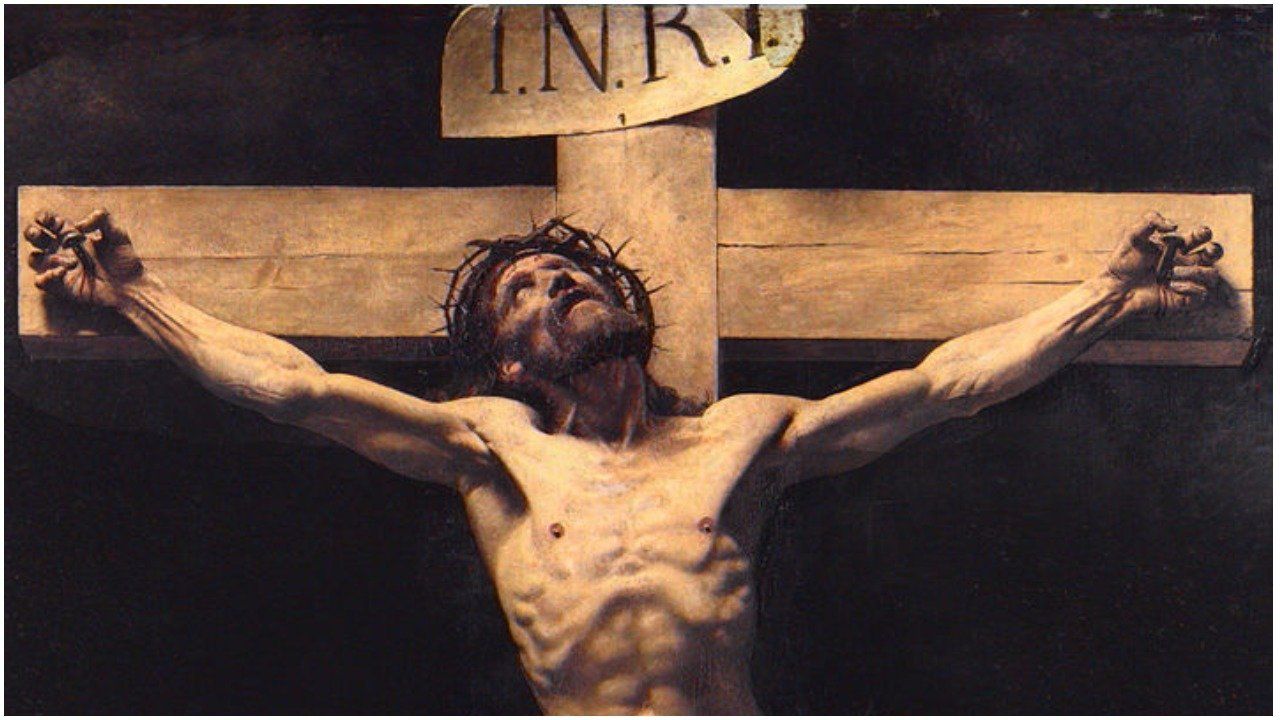
What does INRI mean? The acronym INRI stands for "Iesus Nazarenus, Rex Iudaeorum," which translates to "Jesus of Nazareth, King of the Jews." This phrase was inscribed on the cross during Jesus' crucifixion, as described in the Gospel of John. Pontius Pilate, the Roman governor, ordered this inscription in three languages: Hebrew, Latin, and Greek. This act was meant to publicly declare the charge against Jesus, serving as both a mockery and a legal statement. INRI has since become a powerful symbol in Christianity, representing Jesus' sacrifice and his role as the Messiah.
What Does INRI Stand For?
The acronym INRI is often seen on crucifixes and depictions of the Crucifixion. It stands for the Latin phrase "Iesus Nazarenus, Rex Iudaeorum," which translates to "Jesus of Nazareth, King of the Jews." This title has deep historical and religious significance.
-
The practice of inscribing a titulus, or title, on the cross of those condemned to crucifixion was common in ancient Rome. It served as a public declaration of the reason for the execution.
-
In Roman law, crucifixion was a severe punishment reserved for slaves, prisoners of war, and insurgents. The titulus was part of this public display, meant to clearly state the crime and the name of the condemned.
Pilate's Role in the Inscription
Pontius Pilate, the Roman governor who ordered Jesus' crucifixion, played a significant role in the creation of the INRI inscription. His actions and motivations have been the subject of much debate.
-
Pilate had the titulus written in three languages: Hebrew, Latin, and Greek. This was likely an attempt to mock Jesus by making the inscription visible to a wide audience.
-
The inscription read "Iesus Nazarenus, Rex Iudaeorum," reflecting the charge brought against Jesus, who was seen as a threat to Roman authority and Jewish traditions.
The Three Languages of the Inscription
The use of three languages on the titulus was significant and reflected the multicultural context of ancient Jerusalem.
-
In Hebrew, it was written as ישוע הנצרי ומלך היהודים (Yeshua` HaNotsri U'Melech HaYehudim), which translates to "Jesus the Nazarite and King of the Jews."
-
In Greek, the inscription was written as Ἰησοῦς ὁ Ναζωραῖος ὁ Bασιλεὺς τῶν Ἰουδαίων (Ihsous Nazoraios Basileus ton Ioudaion), meaning "Jesus Nazarene King of the Jews."
Variations in Orthodox Traditions
Different Christian traditions have their own interpretations and variations of the INRI inscription.
-
Some Eastern Orthodox Churches use INBI, derived from the Greek version. Other Orthodox traditions use variations like "ΙΝΒΚ" (The King of the World) or "ΙΝΒΔ" (The King of Glory).
-
The Romanian Orthodox Church uses the Latin version INRI, while the Russian Orthodox Church uses ІНЦІ (the Church Slavonic equivalent of INBI) or the abbreviation Цръ Слвы ("King of Glory").
Symbolism and Artistic Depictions
The inscription INRI has become a powerful symbol in Christianity, representing both the historical event of Jesus' crucifixion and the theological significance of Jesus as the King of the Jews.
-
INRI serves as a reminder of Jesus' sacrifice and his role in human salvation.
-
INRI is often depicted on crucifixes and other artworks related to the Crucifixion. The plaque or parchment bearing the Latin letters INRI is typically placed above Jesus' head.
Cultural and Liturgical Significance
Beyond its religious significance, INRI has cultural and historical importance. It reflects the complex interplay between Roman law, Jewish traditions, and early Christian theology.
-
The use of multiple languages on the titulus underscores the multicultural context of the ancient Mediterranean world.
-
In liturgical contexts, the inscription INRI is often used in conjunction with other symbols and motifs associated with the Crucifixion.
Theological Interpretations
Theological interpretations of INRI vary widely, reflecting different aspects of Jesus' identity and mission.
-
Some see it as a declaration of Jesus' kingship over the world, while others view it as a statement of his role as the Messiah in Jewish tradition.
-
The phrase "King of the Jews" can also be seen as a title that reflects both Jesus' Jewish heritage and his claim to be the rightful ruler of Israel.
Aramaic and Legal Perspectives
Some interpretations suggest that INRI has deeper meaning in Aramaic, and from a legal perspective, the inscription served a specific purpose.
-
The word "INRI" is sometimes translated to "REALITY" in Aramaic, adding a layer of mystical significance to the acronym.
-
From a legal perspective, the inscription on the cross served as a public declaration of the crime and the name of the condemned.
Historical Relics and Gospel Accounts
There are historical relics and different accounts in the canonical gospels that describe the inscription on the cross.
-
A walnut wood panel in Rome is considered by some to be the original titulus, although its authenticity is disputed.
-
The four canonical gospels describe the inscription on the cross differently. Mark's Gospel mentions only "The inscription indicating the reason for condemnation said, The King of the Jews" (Mark 15:26).
-
Matthew writes, "Above his head they placed the written reason for his condemnation: ‘This is Jesus, the King of the Jews'" (Matthew 27:37).
-
Luke's Gospel states, "There was also an inscription above his head: ‘This is the King of the Jews'" (Luke 23:38).
-
John's Gospel provides the most detailed account, including the use of three languages.
Pilate's Motivation and Jewish Reaction
Pilate's motivation for writing the inscription in three languages and the reaction of the Jewish priests are subjects of debate.
-
Some see Pilate's actions as an attempt to mock Jesus by making the inscription visible to a wide audience.
-
Others believe it was a genuine attempt to follow Roman law and provide clarity about the charge.
-
The Jewish priests reacted to the inscription by asking Pilate to change it to "He said, I am the King of the Jews." However, Pilate refused, stating, "What I have written, I have written" (John 19:19-22).
Symbolic and Artistic Representations
Beyond its literal meaning, INRI has symbolic significance and is represented in various artistic forms.
-
INRI represents Jesus' willingness to suffer and die for humanity, embodying the themes of sacrifice and redemption central to Christian theology.
-
Artistic representations of INRI vary widely. Some crucifixes feature the inscription prominently, while others may include additional symbols or motifs related to the Passion narrative.
Liturgical Practices and Cultural Impact
INRI is used in various liturgical practices and has a significant cultural impact.
-
In liturgical practices, INRI is often used in conjunction with other elements of the Passion narrative, such as the Holy Sponge, True Cross, Holy Robe, and Holy Lance.
-
The cultural impact of INRI extends beyond religious contexts. It has influenced art, literature, and popular culture, often serving as a powerful symbol of sacrifice and redemption.
Historical Accuracy and Theological Debate
Historical accuracy and theological debates surrounding INRI focus on its significance within Christian theology.
-
The use of three languages on the titulus reflects the multicultural context of ancient Jerusalem, where Hebrew, Latin, and Greek were all spoken.
-
Some argue that INRI represents Jesus' claim to be the rightful ruler of Israel, while others see it as a declaration of his role as the Messiah.
Aramaic Connection and Legal Significance
Some scholars suggest that the Aramaic word for INRI means "REALITY," adding a layer of mystical significance to the acronym.
-
This interpretation is not universally accepted, but it adds an interesting dimension to the understanding of INRI.
-
From a legal perspective, the inscription on the cross served as a public declaration of the crime and the name of the condemned.
Historical Relics and Gospel Accounts
There are historical relics and different accounts in the canonical gospels that describe the inscription on the cross.
-
A walnut wood panel in Rome is considered by some to be the original titulus, although its authenticity is disputed.
-
The four canonical gospels describe the inscription on the cross differently. Mark's Gospel mentions only "The inscription indicating the reason for condemnation said, The King of the Jews" (Mark 15:26).
-
Matthew writes, "Above his head they placed the written reason for his condemnation: ‘This is Jesus, the King of the Jews'" (Matthew 27:37).
-
Luke's Gospel states, "There was also an inscription above his head: ‘This is the King of the Jews'" (Luke 23:38).
-
John's Gospel provides the most detailed account, including the use of three languages.
Pilate's Motivation and Jewish Reaction
Pilate's motivation for writing the inscription in three languages and the reaction of the Jewish priests are subjects of debate.
-
Some see Pilate's actions as an attempt to mock Jesus by making the inscription visible to a wide audience.
-
Others believe it was a genuine attempt to follow Roman law and provide clarity about the charge.
-
The Jewish priests reacted to the inscription by asking Pilate to change it to "He said, I am the King of the Jews." However, Pilate refused, stating, "What I have written, I have written" (John 19:19-22).
The Last Word on INRI
INRI, short for "Iesus Nazarenus, Rex Iudaeorum," means "Jesus of Nazareth, King of the Jews." This inscription, ordered by Pontius Pilate, was written in Hebrew, Latin, and Greek. It aimed to mock Jesus while fulfilling Roman legal customs. Seen on crucifixes, INRI symbolizes Jesus' sacrifice and his role in salvation. Different Christian traditions interpret it uniquely, reflecting theological and cultural nuances. The inscription's historical context, artistic depictions, and liturgical use highlight its enduring significance. Whether viewed as a declaration of kingship or a statement of messianic claim, INRI remains a powerful symbol in Christianity. Its presence in art, literature, and religious practices underscores its lasting impact. Understanding INRI offers a glimpse into the complex interplay of history, culture, and faith that shapes Christian beliefs.
Was this page helpful?
Our commitment to delivering trustworthy and engaging content is at the heart of what we do. Each fact on our site is contributed by real users like you, bringing a wealth of diverse insights and information. To ensure the highest standards of accuracy and reliability, our dedicated editors meticulously review each submission. This process guarantees that the facts we share are not only fascinating but also credible. Trust in our commitment to quality and authenticity as you explore and learn with us.


